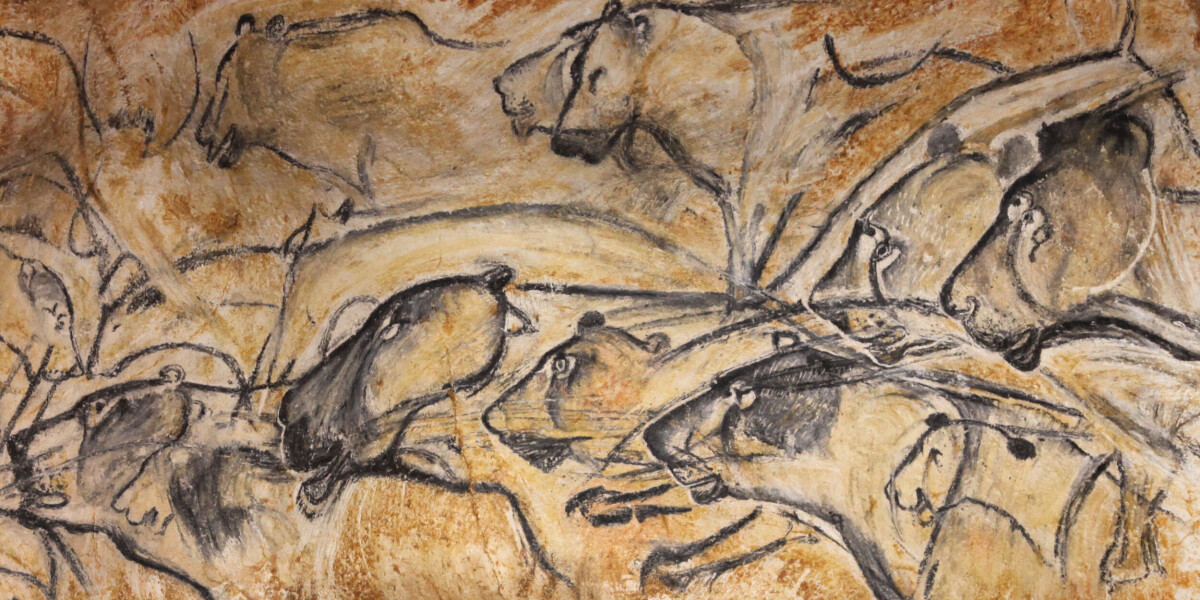
Chauvet cave in south of france is slowly revealing its secrets
- Select a language for the TTS:
- UK English Female
- UK English Male
- US English Female
- US English Male
- Australian Female
- Australian Male
- Language selected: (auto detect) - EN
Play all audios:

The Chauvet cave in Ardèche is slowly giving up its secrets. Thanks to 3D surveys and a multi-disciplinary approach, specialists are finally able to shed some light on the site’s
36,000-year-old paintings. And an exhibition in Paris, which runs until May 11, will also give members of the public a chance to see how their work is unfolding. Carole Fritz is director of
Grotte Chauvet-Pont d'Arc in the Ardèche, and head of research for the CNRS at the UMR 8220 LAMS in Paris and the Prehistoric Art Research Centre in Toulouse. She has been part of the
multidisciplinary team since its inception in 1998, four years after the cave was first discovered by three amateur speleologists. Read more: The world’s oldest cave paintings discovered 30
years ago in France In the decades since, the 59-year-old has never forgotten what it was like to see the paintings for the first time. “I remember it perfectly. That's an emotional
shock you can't forget. It's like seeing the ceiling of the Sistine Chapel,” she said. “It was especially moving to stand in front of the horse panel because it's one of the
big sets you see first after the large red panels. “But even today, when I go back into the cave, something happens. It's an exceptional, fantastic place.” Chauvet is still not as well
known as Lascaux, a network of caves near the village of Montignac (Dordogne) that was discovered in 1940 and contains 600 wall paintings, mainly representing large animals. These are
18,000 years younger than Chauvet’s. Lascaux was closed to the public in 1963 after carbon dioxide, heat, humidity, and other contaminants produced by visitors visibly damaged the
paintings. Read more: Bellegarde dig shows France’s evolving approach to archaeology DISCOVERY OF CHAUVET Chauvet, discovered in 1994, has been closed since 1995. Indeed, more people have
been to the summit of Mount Everest than inside the Chauvet Cave, with only researchers and scientists granted entry for a single month each year in March, when CO2 levels drop to safe
levels for humans. In 2025, their re-entry coincides with the publication of a book exploring the first rooms of the cave. For the research team, 3D technology has been vital not only in
helping them recreate the paintings and footprints for a nearby museum, but also to understand much more about how the cave was used. CHAUVET CAVE TIMELINE December 18, 1994: The Chauvet
cave is first discovered December 29, 1994: Jean Clottes, general curator of artistic heritage and international cave painting expert for Unesco and the International Council on Monuments
and Sites authenticates the cave paintings. October 13, 1995: Chauvet Cave is permanently closed to the public, monitored by scientists and listed on the Historical Monument register.
February 14, 1997: Ownership of Chauvet Cave passes to the French State. January 24, 2013: France decides to apply for UNESCO World Heritage Site status. It is granted 18 months later.
“The advantage of 3D technology is that it allows us to merge data more easily, and have an overview that's much easier to analyse,” Ms Fritz said. As to why our ancestors chose that
particular cave, there’s no conclusive proof, but she can hazard an educated guess. “Chauvet was visible from afar and it had a very large opening. Let's not forget that in those days
they didn't have maps, so to get around there were special points that helped. I think that's what made it so attractive.” When asked what she has learned about Chauvet from all
the data gathered so far, Ms Fritz said: “It's the social and cultural anthropological perspective that interests me. “Paleolithic art is, for me, the very root of Homo sapiens
thought: and the Chauvet Cave is the first cave we have of Homo sapiens from over 36,000 years ago. “It's very important because there are also small ivory statuettes from the same
period in Germany, and we can see that the same themes are used. “We're at the point where Homo sapiens will inscribe their symbolic thinking on walls. This is an important,
fundamental and founding event for our species.” Read more: French Palaeolithic cave art shows deep human connection with animals CITÉ DES SCIENCES ET DE L'INDUSTRIE EXHIBITION
Frustratingly, despite all the work done, the cave still begs more questions about the people who used it. “We feel like we're close, but we're so far away from them because we
don't understand. To be very honest, I don't think we'll ever get the whole answer because we have no writing, we have no data,” Ms Fritz said. “It's as if 4,000 years
from now, someone walked into the ruins of a church and said: ‘I'm going to reconstruct a social structure, through this and the tools we're going to find around the church.’
It's very complicated.” Although Chauvet is not directly at risk from the effects of climate change, there is a danger if the evolution of the landscape around the cave happens too
quickly. For the moment, the focus is on continuing to study the cave, writing books and inspiring the next wave of researchers. Ms Fritz said the public response to the Paris exhibition,
which runs until May 11 at the Cité des Sciences et de l'Industrie, has been positive. “People are quite happy to put themselves in the shoes of a researcher, because we're a bit
unattainable, especially to young people. “The idea was to make them understand that you could do science even if you didn't do mathematics. That – and study a cave.” Grotte Chauvet,
l'aventure scientifique exhibition runs at the Paris Cité des Sciences et de l'Industrie until May 11. Tickets from €12.
